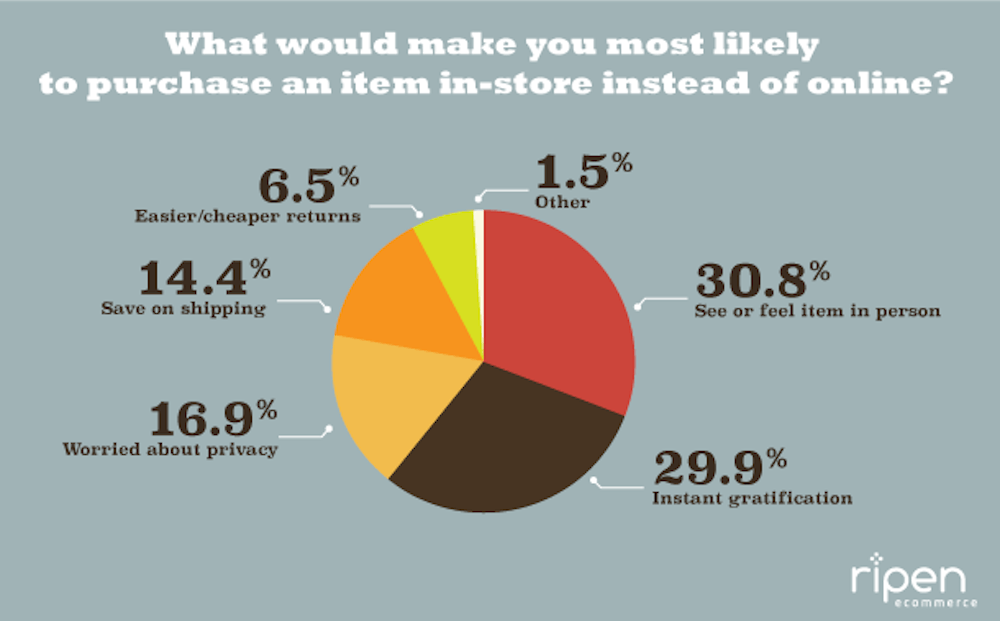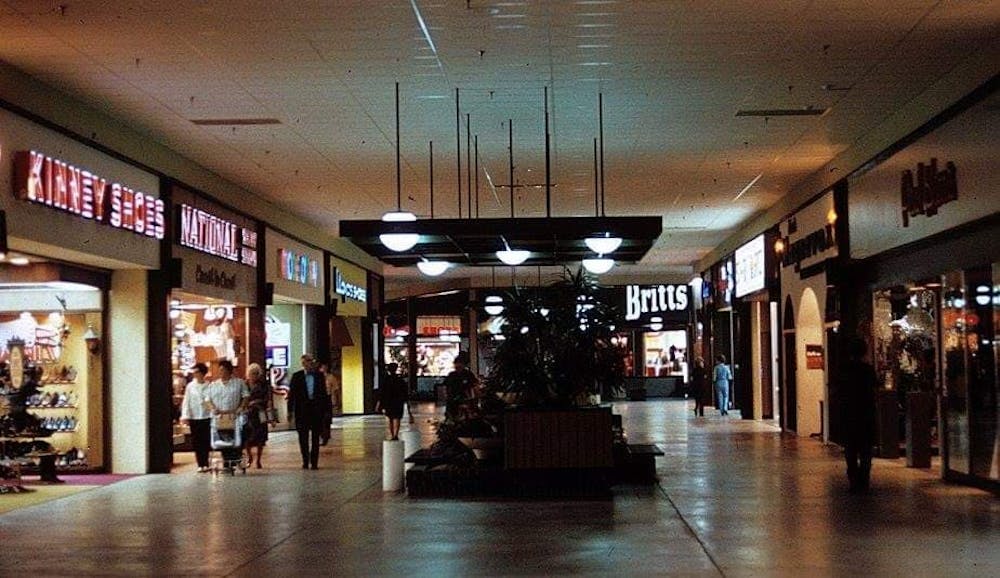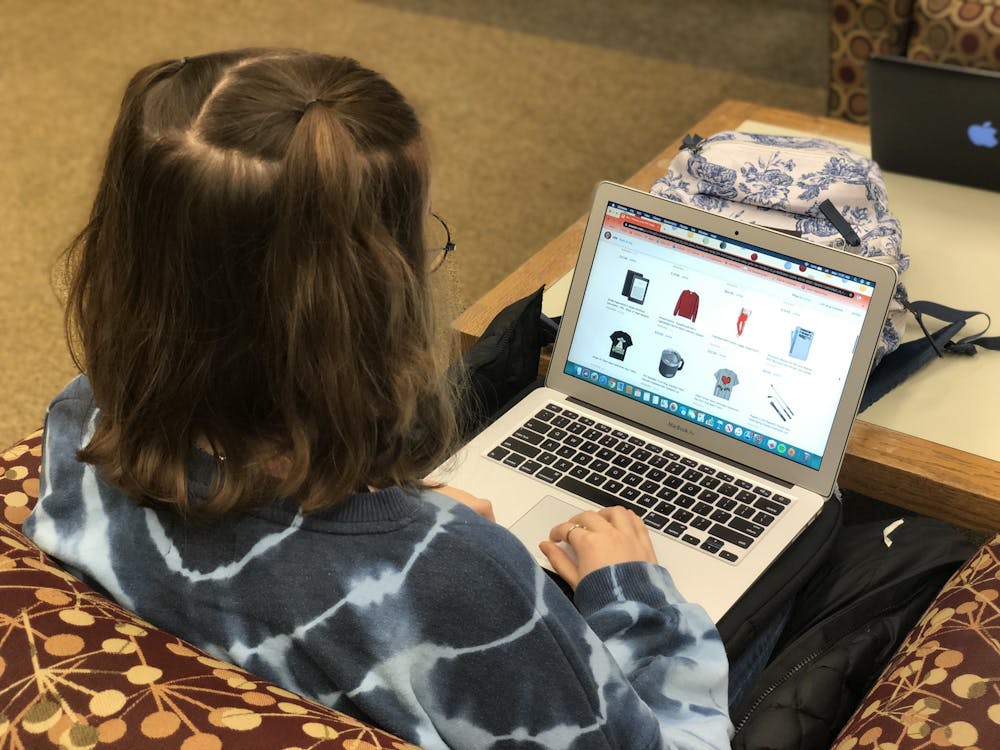Last year marked the first year in recorded history that “non-store” and online retail sales were higher than general merchandise store sales.
According to the U.S. Department of Commerce, February 2019 marked the first time online sales overtook general merchandise stores. Non-store retail sales accounted for 11.813 percent of the total, while general merchandise was at 11.807 percent.
Amazon has been leading the way in this push of online sales past general merchandise, according to Statista, a business data platform. They run multiple online stores, and the wide product selection plays a big part in their success, along with their subscription service Amazon Prime. Discounts that include shipping discounts and membership to Prime Video have given consumers a reason to subscribe. Offering these services is something that department stores can’t compete with.
For college students away from home, online shopping has offered an alternative to having to make the trip home to their favorite stores. Ball State University senior Katie Ambs has relied on online shopping to do just that.
“It’s convenient, but I’m also lazy. But also if I know my size I don’t need to go to the store, and I can buy it online,” Ambs said. “Also Muncie doesn’t have stores I shop at so I buy online instead of driving over an hour to them.”
When you compare general merchandise and online retail, they are similar, yet very different. The biggest advantage that department stores have always had is the ability to physically touch and see what you are shopping for. This is especially true when it comes to clothes. With traditional department and retail stores, having clothing in the store waiting for the customer to come buy it has always been a big advantage.
Ripen, a digital commerce marketing agency, recently did a study regarding retail purchases. According to this study, 92 percent of U.S. retail purchases still happen offline, and that ecommerce’s growth only represents eight percent of the total retail market. They collected this data using Google Consumer Surveys, a polling system used in the 2012 presidential elections.
This survey sought out the reason for these results, despite the data that was shown by the Commerce Department. Of the 1,235 American shoppers that were polled, the number one reason was to feel or see the item in person. This lines up with what many believe to be the main reason at this point that department stores would outsell online retail stores.

Graph provided by Ripen Digital study
The second biggest reason for going out and seeking out the item you want is to instantly have it in your hands. Sure, sometimes a store might run out of an item, but being able to walk in, grab something, and then walk out has always been extremely convenient for customers. Amazon has a Prime membership that offers same-day or next-day delivery to get the item you bought to you as soon as possible This essentially is an alternative to getting an item in person quickly.
The rise in online shopping has affected many malls in America, including Muncie Mall. If you take a walk through the mall today, you will see open store spaces and a few clearance signs. Many stores have opened and closed within the past few years, with the most recent big closing announcement being Macy’s, an anchor store for the mall. In 2018, Sears and Carson’s, two of the malls four anchor stores at the time, closed. Macy’s, through various names, served the Muncie community for dozens of years, but will soon close its doors, leaving the future of the mall uncertain, and leaving J.C. Penney as the only anchor store remaining in the mall.

Photo: Lost Muncie Facebook Group
This news has sent reminiscence and nostalgia throughout the Muncie community, and many are taking to Facebook to relive what used to be a rich history in the mall. A group called “Lost Muncie” has been filled with old pictures of the mall in its glory days. Many of these posts are filled with stories and memories of stores that were open before some current mall-goers were alive.
The future of retail has come into question, and this topic was discussed at the Twin Cities Business Talks: Retail 2030, at the end of January. Jill Renslow, senior vice president of business development and marketing at Mall of America was one of the guests at the panel. A big question brought up was the future of retail.
“It’ll really be about centralizing services so that you don’t have to go to ten different stores to pick up items,” Renslow said. “You can go to one place, grab your stuff, and then go have experiences with your family. Because time is money.”
These discussions may be necessary now with this increase of online shopping. The TCB Talks are taking a look into the future, and what it means for stores all over the country.
The growing trend of online shopping has all but cost the mall, which has been open since 1970, its life. As online shopping continues to grow and increase sales, the question that has to be asked is: “How will stores adapt to this trend?” The trend of online shopping has been around for a while, but has only seriously threatened retail stores within the past few years. How they adapt could determine the future of shopping as a whole.





